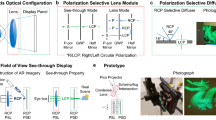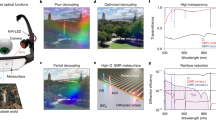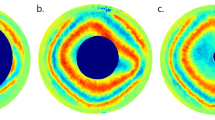Abstract
THE development of interference microscopes of the double-refracting type has stimulated a renewed interest in eyepieces having at their focal planes sensitive birefringent devices for increasing the accuracy with which forms of polarization can be determined. These devices usually employ a boundary or boundaries formed by one or more birefringent plate elements viewed through an analyser, and the difficulty arises of making boundaries sufficiently precise for the maximum sensitivity to be achieved. The present communication is a brief account of two rather promising solutions to this problem which have recently been investigated here.
This is a preview of subscription content, access via your institution
Access options
Subscribe to this journal
Receive 51 print issues and online access
$199.00 per year
only $3.90 per issue
Buy this article
- Purchase on Springer Link
- Instant access to full article PDF
Prices may be subject to local taxes which are calculated during checkout
Similar content being viewed by others
Author information
Authors and Affiliations
Rights and permissions
About this article
Cite this article
SMITH, F. Two Half-shade Devices for Optical Polarizing Instruments. Nature 173, 362–363 (1954). https://doi.org/10.1038/173362b0
Issue Date:
DOI: https://doi.org/10.1038/173362b0
This article is cited by
Comments
By submitting a comment you agree to abide by our Terms and Community Guidelines. If you find something abusive or that does not comply with our terms or guidelines please flag it as inappropriate.



